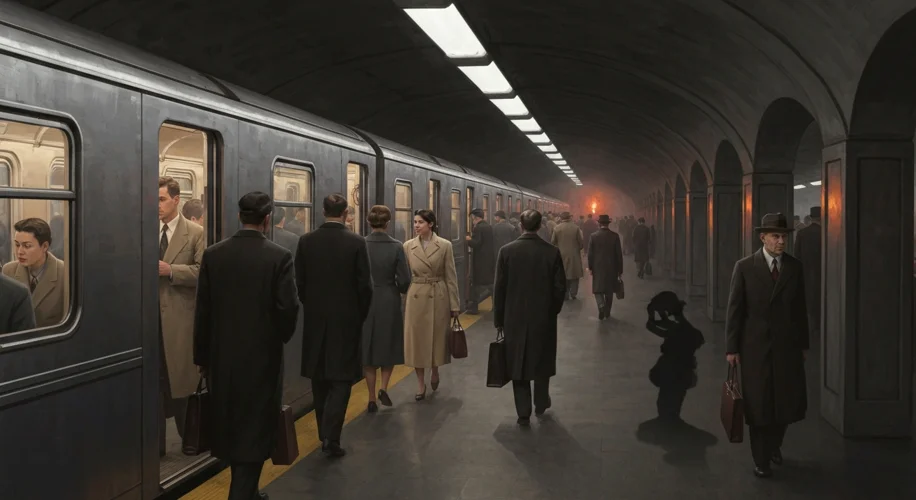The rumble of a steam train, the clatter of a streetcar, the hiss of a bus – these sounds have been the soundtrack to modern life for over a century. Public transportation has ferried billions, connecting communities and fueling economies. Yet, beneath the convenience lies a history fraught with peril, a narrative shaped by tragedy and a relentless pursuit of safety. Today, as we navigate our cities and countries via trains, buses, and subways with a relative sense of security, it’s worth remembering the arduous journey that brought us here.
In the nascent days of public transit, safety was often an afterthought, a luxury that gave way to expansion and profit. The late 19th and early 20th centuries saw a boom in urban rail and streetcar systems. These were often engineering marvels, but they also operated with a frightening lack of standardized safety protocols. Boiler explosions on trains, derailments due to faulty tracks, and collisions were disturbingly common. The sheer force and speed of these machines, coupled with rudimentary braking systems and little oversight, meant that accidents were not just possible, but probable.
Consider the “Great Train Wreck of 1918” in Nashville, Tennessee. Two commuter trains, one carrying workers to a factory and the other a passenger train, collided head-on at a crossing. The impact was devastating, claiming 101 lives and injuring over 170. The cause? A combination of human error and a lack of clear communication regarding train movements. This wasn’t an isolated incident. Across the globe, similar tragedies unfolded with alarming regularity. The public’s perception of safety was a precarious balance between the undeniable utility of these services and the ever-present fear of becoming another statistic.

The advent of the automobile and the subsequent rise of bus transportation brought new challenges. While perhaps less prone to the catastrophic mechanical failures of steam engines, buses and early automobiles were subject to their own set of risks. Poor road conditions, inexperienced drivers, and a lack of seatbelts or robust chassis meant that even moderate collisions could have severe consequences. The “Hindenburg disaster” in 1937, while an airship incident, nonetheless cast a long shadow over public confidence in novel modes of transportation, highlighting the inherent risks when safety measures lag behind innovation.
The mid-20th century marked a turning point. The sheer number of casualties from transportation accidents, coupled with evolving societal expectations and a growing understanding of engineering and human factors, began to drive change. Governments worldwide started to implement stricter regulations. In the United States, the establishment of agencies like the Interstate Commerce Commission (ICC) and later the National Transportation Safety Board (NTSB) began to formalize the investigation of accidents and the creation of safety standards. This included regulations for driver training, vehicle maintenance, track inspections, and signaling systems.
The subway systems, born out of necessity in densely populated cities, also had their share of harrowing incidents. Fires within tunnels, derailments caused by obstructions or mechanical failures, and even human-induced disasters like the 1995 Tokyo subway sarin attack, underscored the unique vulnerabilities of underground transit. The sarin attack, in particular, was a stark reminder that safety wasn’t just about engineering; it was also about security and the potential for malicious intent.

In more recent decades, the focus has broadened. The NTSB and its international counterparts now meticulously analyze every aspect of an incident, from the design of the vehicle to the psychological state of the operator, the condition of the infrastructure, and the broader operational context. The introduction of technologies like automatic train control, advanced braking systems, fire suppression in tunnels, and enhanced passenger communication have dramatically improved safety records.
Public perception of safety has also shifted dramatically. While dramatic accidents still capture headlines and can temporarily erode confidence, the long-term trend is one of increasing trust. We expect our buses to arrive on time, our trains to run smoothly, and our commutes to be uneventful. This expectation is not accidental; it is the hard-won result of decades of regulatory pressure, technological advancement, and a continuous learning process fueled by both near misses and devastating losses.
The history of public transportation safety is a testament to human resilience and our capacity to learn from mistakes. It’s a story of engineers, policymakers, accident investigators, and everyday citizens who, through their demands and dedication, have transformed potentially dangerous modes of travel into the reliable arteries of our modern world. The journey from the smoke-belching, perilous machines of the past to the safe, efficient systems of today is a critical, albeit often overlooked, chapter in our shared history.


